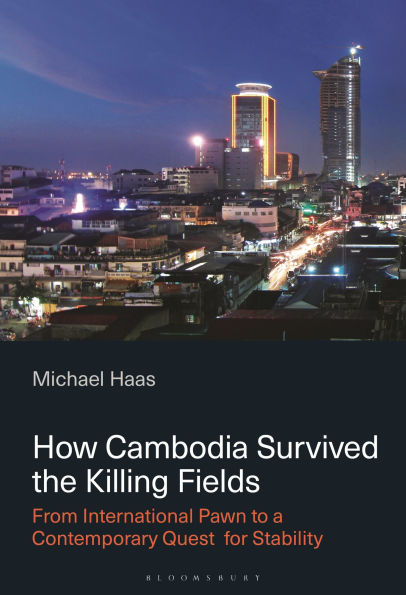How Cambodia Survived the Killing Fields: From International Pawn to a Contemporary Quest for Stability
Weaving a critique of major power intervention into political history, this book provides a comprehensive overview of Cambodia from 1953 to the present.
Since gaining its independence in 1953, Cambodia has been treated as a pawn by more powerful countries. China, Vietnam, the United Nations, and especially the United States have played a role in shaping Cambodia's history, from propping up the Khmer Rouge regime to restricting its economic opportunities.
Michael Haas has been deeply and personally involved in many aspects of the recent history of the country, and his research uncovers details of 20th-century US realpolitik such as Lyndon Johnson's indiscriminate bombing of Cambodia during the Vietnam War, US funding of the Khmer Rouge in the 1980s, and the Unites States' surrender of economic control to China since the 1990s. In an era of increasing great power competition in Southeast Asia, Cambodia is a case study long overdue for reassessment.
1147010340
Since gaining its independence in 1953, Cambodia has been treated as a pawn by more powerful countries. China, Vietnam, the United Nations, and especially the United States have played a role in shaping Cambodia's history, from propping up the Khmer Rouge regime to restricting its economic opportunities.
Michael Haas has been deeply and personally involved in many aspects of the recent history of the country, and his research uncovers details of 20th-century US realpolitik such as Lyndon Johnson's indiscriminate bombing of Cambodia during the Vietnam War, US funding of the Khmer Rouge in the 1980s, and the Unites States' surrender of economic control to China since the 1990s. In an era of increasing great power competition in Southeast Asia, Cambodia is a case study long overdue for reassessment.
How Cambodia Survived the Killing Fields: From International Pawn to a Contemporary Quest for Stability
Weaving a critique of major power intervention into political history, this book provides a comprehensive overview of Cambodia from 1953 to the present.
Since gaining its independence in 1953, Cambodia has been treated as a pawn by more powerful countries. China, Vietnam, the United Nations, and especially the United States have played a role in shaping Cambodia's history, from propping up the Khmer Rouge regime to restricting its economic opportunities.
Michael Haas has been deeply and personally involved in many aspects of the recent history of the country, and his research uncovers details of 20th-century US realpolitik such as Lyndon Johnson's indiscriminate bombing of Cambodia during the Vietnam War, US funding of the Khmer Rouge in the 1980s, and the Unites States' surrender of economic control to China since the 1990s. In an era of increasing great power competition in Southeast Asia, Cambodia is a case study long overdue for reassessment.
Since gaining its independence in 1953, Cambodia has been treated as a pawn by more powerful countries. China, Vietnam, the United Nations, and especially the United States have played a role in shaping Cambodia's history, from propping up the Khmer Rouge regime to restricting its economic opportunities.
Michael Haas has been deeply and personally involved in many aspects of the recent history of the country, and his research uncovers details of 20th-century US realpolitik such as Lyndon Johnson's indiscriminate bombing of Cambodia during the Vietnam War, US funding of the Khmer Rouge in the 1980s, and the Unites States' surrender of economic control to China since the 1990s. In an era of increasing great power competition in Southeast Asia, Cambodia is a case study long overdue for reassessment.
110.0
Pre Order
5
1

How Cambodia Survived the Killing Fields: From International Pawn to a Contemporary Quest for Stability
248
How Cambodia Survived the Killing Fields: From International Pawn to a Contemporary Quest for Stability
248Hardcover
$110.00
110.0
Pre Order

Product Details
| ISBN-13: | 9798765137277 |
|---|---|
| Publisher: | Bloomsbury Academic |
| Publication date: | 10/02/2025 |
| Pages: | 248 |
| Product dimensions: | 6.00(w) x 9.00(h) x 1.00(d) |
About the Author
From the B&N Reads Blog
